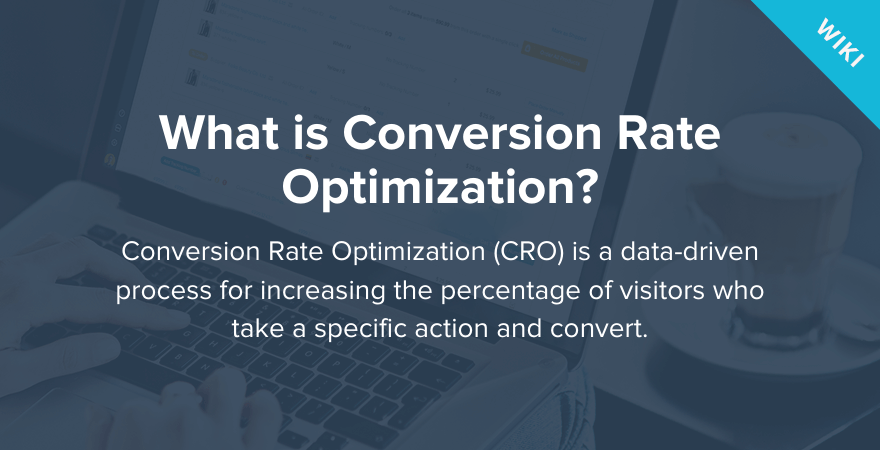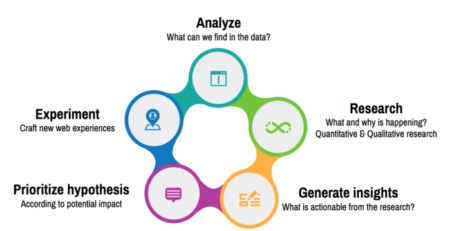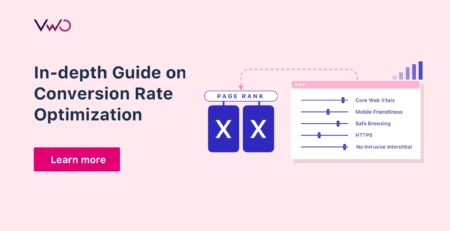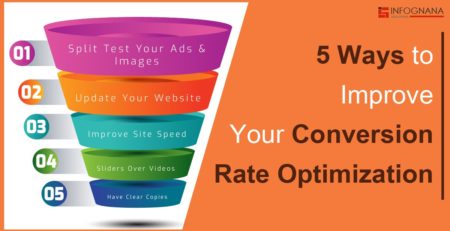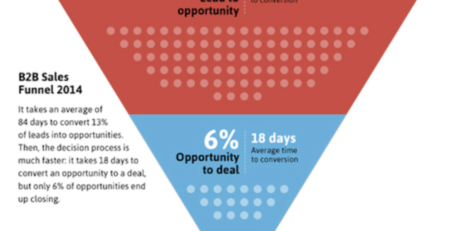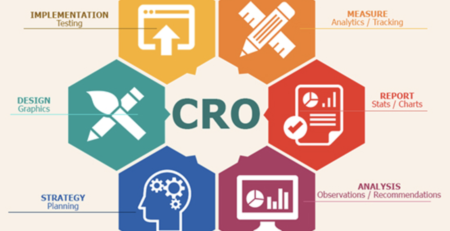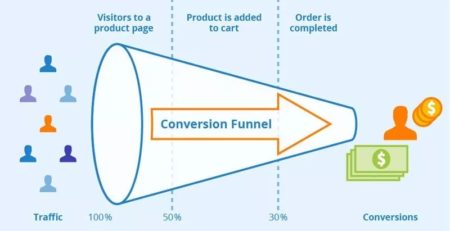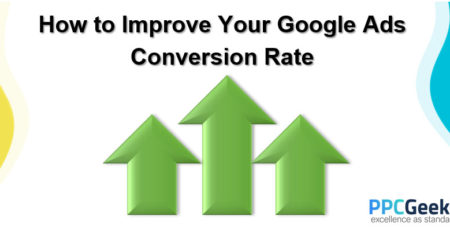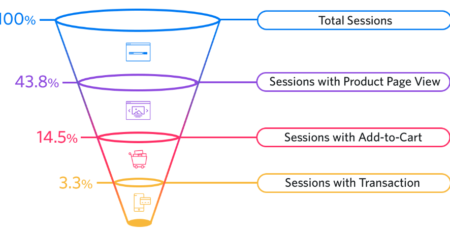What Is Conversion Rate Optimization Cro Meaning?
Do you ever wonder how websites persuade us to take certain actions? Well, let me introduce you to Conversion Rate Optimization (CRO).
In simple terms, CRO is the process of making adjustments to a website to increase the likelihood of visitors completing desired actions, like making a purchase or submitting a form.
Think of it like a secret recipe that helps website owners turn visitors into customers. So, if you’re curious to learn more about CRO and how it can benefit businesses, keep reading!
Understanding Conversion Rate Optimization (CRO): A Guide for Marketers
Welcome to this comprehensive guide on Conversion Rate Optimization (CRO) and its meaning. If you’re a marketer or business owner looking to enhance your website’s performance and drive more conversions, you’re in the right place. In this article, we’ll dive deep into the world of CRO, exploring what it is, its importance, and how you can implement effective strategies to optimize conversion rates. So, let’s get started!
The Fundamentals of Conversion Rate Optimization
Conversion Rate Optimization (CRO) refers to the systematic process of improving your website’s performance to increase the likelihood of visitors taking desired actions, such as making a purchase, filling out a form, or subscribing to a newsletter. It involves analyzing user behavior, testing different variations of web elements, and making data-driven optimizations to maximize conversions.
At its core, CRO aims to enhance the user experience and guide visitors through a conversion funnel, ultimately increasing the percentage of website visitors who become customers. By fine-tuning elements such as your website’s design, layout, copywriting, and calls-to-action, you can create a frictionless and persuasive path for users, leading to increased conversions and revenue.
The Benefits of Conversion Rate Optimization
Implementing effective CRO strategies can yield numerous benefits for your business. Let’s explore some of the key advantages:
- Higher Conversion Rates: By optimizing your website for conversions, you can significantly increase the percentage of visitors who take desired actions, ultimately driving more sales, leads, and revenue.
- Improved Return on Investment (ROI): CRO enables you to make the most of your existing website traffic, increasing conversions without the need to attract additional visitors, resulting in a higher ROI.
- Enhanced User Experience: Through careful analysis of user behavior and iterative testing, CRO helps to create a seamless and user-friendly website experience, improving customer satisfaction and brand perception.
- Valuable Customer Insights: CRO involves data-driven decision-making, providing insights into user preferences and behaviors. This valuable information can inform broader marketing strategies and improve overall customer targeting.
Conversion Rate Optimization vs. Search Engine Optimization
While both Conversion Rate Optimization (CRO) and Search Engine Optimization (SEO) aim to improve website performance, they focus on different aspects. SEO primarily focuses on driving organic traffic to your site by optimizing it for search engines, whereas CRO concentrates on maximizing conversions from the existing traffic. While SEO focuses on getting users to your website, CRO focuses on getting them to take action once they’re there.
It’s important to note that CRO and SEO are not mutually exclusive and should ideally work together harmoniously. By combining the power of both disciplines, you can attract relevant traffic through SEO efforts and then optimize that traffic for conversions through CRO strategies.
Getting Started with Conversion Rate Optimization
Now that we have a clear understanding of what Conversion Rate Optimization (CRO) is and its benefits, let’s delve into the process of getting started with CRO for your website. In this section, we’ll explore the key steps you need to follow to implement effective CRO strategies.
Step 1: Define Your Goals and Key Performance Indicators (KPIs)
Before diving into CRO, it’s essential to clearly define your goals and key performance indicators (KPIs). What specific actions do you want visitors to take on your website? Is it making a purchase, filling out a form, or signing up for a trial? Identifying your goals will help you establish meaningful metrics to measure success and track progress.
Some common KPIs in CRO include conversion rate, average order value, bounce rate, and cart abandonment rate. Choose KPIs that align with your business objectives and that can be easily tracked and monitored.
Step 2: Conduct User Research and Analysis
Understanding your target audience is crucial for effective CRO. Conduct user research to gain insights into their preferences, pain points, and motivations. Utilize tools like surveys, heatmaps, session recordings, and analytics data to gather user behavior information.
Analyze this data to identify areas of improvement and potential roadblocks on your website. Look for patterns, trends, and common pain points that can guide your optimization efforts. This user-centered approach will help you create personalized experiences that resonate with your audience.
Step 3: Test and Optimize Your Website Elements
Testing is a fundamental aspect of CRO. By running controlled experiments, you can determine which variations of your website elements perform better in terms of conversions. A/B testing and multivariate testing are commonly used methods in CRO.
Start by identifying the areas of your website that require optimization. This could include your homepage, product pages, checkout process, or call-to-action buttons. Create multiple variations of these elements and test them against each other to identify the most effective version.
Step 4: Implement Changes and Monitor Results
Once you’ve identified winning variations through testing, it’s time to implement the changes on your website. Update your designs, content, and user flows based on the insights gained from your experiments.
Monitor the impact of these changes by continuously analyzing your conversion metrics. Keep refining and iterating your optimization strategies based on the results. CRO is an ongoing process, and achieving optimal conversion rates requires consistent effort and analysis.
The Future of Conversion Rate Optimization
As technology advances and user expectations continue to evolve, the field of Conversion Rate Optimization (CRO) is constantly evolving. Let’s explore some of the key trends and future directions in CRO:
1. Personalization and User-centric Experiences
Personalization is becoming increasingly important in CRO. Tailoring your website experience to individual users based on their preferences, past behavior, and demographic information can significantly impact conversion rates.
2. Artificial Intelligence (AI) and Machine Learning
The integration of AI and machine learning algorithms into CRO tools allows for more sophisticated testing and optimization. These technologies can analyze vast amounts of data, identify patterns, and predict user behavior, enabling marketers to make data-driven decisions and improve conversion rates.
3. Mobile Optimization
With the rise of mobile devices, optimizing your website for mobile users is crucial. Mobile optimization includes responsive design, fast load times, and streamlined user experiences, ensuring a seamless browsing experience and maximizing conversions on mobile devices.
Incorporate CRO to Optimize Your Conversions
Conversion Rate Optimization (CRO) is a powerful tool for marketers and business owners, offering immense potential to increase sales, leads, and revenue. By understanding the fundamentals of CRO, aligning with your business goals, and implementing effective strategies, you can create compelling user experiences and improve your website’s performance. So, start incorporating CRO into your digital marketing efforts and watch your conversion rates soar!
Key Takeaways: What is Conversion Rate Optimization (CRO) Meaning?
- Conversion Rate Optimization (CRO) is a process of improving the percentage of website visitors who take a desired action.
- It involves analyzing user behavior, testing different website elements, and making data-driven decisions to optimize conversions.
- CRO helps businesses increase their revenue and ROI by maximizing the value of their existing website traffic.
- It focuses on improving various aspects of a website, such as design, copywriting, call-to-actions, and user experience.
- By continuously refining and optimizing the conversion process, businesses can achieve higher conversion rates and better results.
Frequently Asked Questions
Welcome to our FAQ section where we answer some common questions related to Conversion Rate Optimization (CRO) and its meaning. Dive in to learn more!
How can you define Conversion Rate Optimization (CRO)?
Conversion Rate Optimization (CRO) refers to the process of optimizing a website or landing page with the goal of increasing the percentage of visitors that convert into customers. CRO involves analyzing data and user behavior to identify areas of improvement and making changes to the website design, user experience, and content to encourage more conversions.
The ultimate aim of CRO is to drive more sales, sign-ups, downloads, or any other desired action from the visitors, resulting in improved business performance. It focuses on enhancing the overall user experience to increase the likelihood of visitors taking the desired action on a website.
Why is Conversion Rate Optimization important for businesses?
Conversion Rate Optimization is essential for businesses as it helps them maximize the return on investment (ROI) from their marketing and advertising efforts. By optimizing conversion rates, businesses can generate more leads, sales, or other conversions without increasing their marketing spend.
In today’s competitive online landscape, where acquiring new customers can be costly, CRO offers a cost-effective approach to improving business profitability. It allows businesses to make data-driven decisions based on user behavior and preferences, resulting in better-targeted marketing campaigns and improved customer experiences, which ultimately leads to higher conversions and revenues.
What are some common techniques used in Conversion Rate Optimization?
Conversion Rate Optimization involves a variety of techniques to improve website performance and increase conversions. Some common techniques include:
– A/B testing: This involves testing two or more versions of a web page to determine which version performs better in terms of conversions.
– User experience (UX) design: Optimizing the layout, navigation, and overall user experience of a website to make it easier for visitors to convert.
– Call-to-actions (CTAs): Designing compelling CTAs that prompt visitors to take the desired action, such as making a purchase or filling out a form.
– Website speed optimization: Improving the loading speed of a website, as slow-loading pages can lead to high bounce rates and reduced conversions.
– Content optimization: Crafting persuasive and relevant content that addresses the needs and pain points of the target audience, encouraging them to convert.
How long does it take to see results from Conversion Rate Optimization?
The time it takes to see results from Conversion Rate Optimization can vary depending on various factors such as the size of your website, the amount of traffic it receives, and the extent of changes made. In some cases, businesses might start noticing improvements within a few weeks, while for others, it may take several months.
To accurately gauge the impact of CRO efforts, it’s crucial to collect sufficient data, conduct thorough analysis, and give the optimization strategies enough time to take effect. Consistently monitoring and evaluating the results will help in identifying what works best for your website and making further adjustments for ongoing enhancements.
Can Conversion Rate Optimization benefit all types of businesses?
Conversion Rate Optimization can benefit businesses of all types and sizes, whether they are e-commerce stores, service providers, or even non-profit organizations. The principles of CRO, such as understanding user behavior, identifying pain points, and optimizing user experience, can be applied across various industries and sectors.
Regardless of the specific goals or offerings of a business, there is always an opportunity to improve the conversion rates and overall performance of a website through CRO. By examining data, conducting experiments, and implementing effective strategies, businesses can drive more conversions, increase customer satisfaction, and ultimately grow their bottom line.
Summary:
Conversion Rate Optimization (CRO) is about making websites better at getting people to take action. CRO helps to increase sales, sign-ups, and other desired actions. To optimize a webpage, we need to understand users, make data-driven changes, and test different versions to see what works best. CRO is important for businesses to maximize their conversion rates and increase their revenue. It’s all about improving user experience and removing barriers that prevent people from taking action on a website.
In order to achieve CRO, we need to focus on different elements like headlines, images, call-to-action buttons, and page layout. By analyzing user behavior and using tools like heatmaps or A/B testing, businesses can determine what changes are needed to improve conversions. Remember, CRO is an ongoing process of constant improvement, and it can lead to significant growth and success for businesses.

